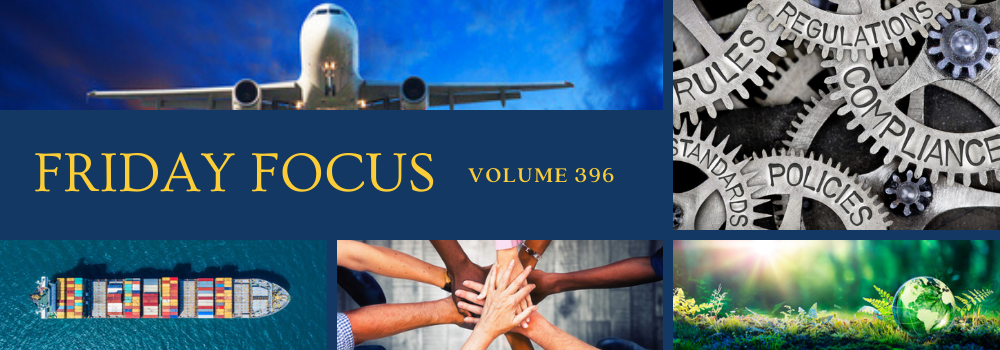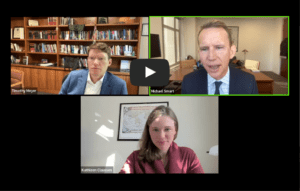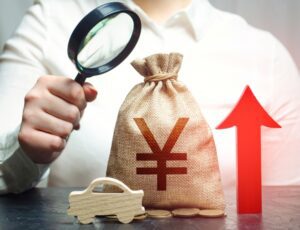Event Video: How “Economic Security” is Re-Shaping Presidential Power
|
On October 24, WITA hosted Professors Kathleen Claussen and Tim Meyer, authors of the article “How ‘Economic Security’ is Re-shaping Presidential Power”. At this WITA Webinar, they discussed the competing demands on the trade administrative state to both liberalize trade and to restrict it in the name of “economic security” when the executive deems necessary. Featured Speakers: Kathleen Claussen, Professor of Law, Georgetown University Law Center Timothy Meyer, Richard Allen/Cravath Distinguished Professor in International Business Law, Duke University School of Law Moderator: Michael J. Smart, Managing Director, Rock Creek Global Advisors |
|
“It’s You, Not Me”: China’s Subsidies and Global Trade Tensions
|
The IMF working paper referenced in this piece, “Trade Implications of China’s Subsidies”, is the next piece featured in this edition of Friday Focus. A recent working paper published by the International Monetary Fund (IMF) found that subsidies made up 95 percent of all Chinese trade distortive policies between 2009 and 2022. For western observers and politicians who have long complained of the impact of Chinese subsidies on domestic producers, the report provides a degree of vindication. As China continues to file complaints with the WTO for other countries’ supposedly excessive tariff regimes, it raises a crucial question: what role does China’s subsidies play in global trade distortion? These frequent complaints may indicate a defensive posture in response to external pressures, but they reveal a concerning disconnect from the implications of its own subsidy program. This ambiguity is most evident in industries China considers strategic, where 20 percent of sectors have received over 50 percent of subsidies, with key products such as batteries, solar panels, and electronic vehicles (EVs) among the most endowed. One may view this targeted approach to subsidies as geared towards a green transition, but it is equally possible that the purpose of subsidies is to outcompete and drive out foreign producers. A case in point is the steel industry. China, the world’s largest steel producer, has been accused of flooding international markets with cheap steel, thanks to the wealth of government subsidies distorting market signals. Japan and South Korea are looking at anti-dumping actions, India has a variety of China-facing anti-dumping probes, including recently on steel, and the government in Chile has imposed temporary anti-dumping tariffs of 25-34 percent to try to keep their steel makers afloat. China’s’ subsidy wave has made it the top net exporter of steel in the world—more than double the volume of Japan, which holds the number two spot. Steel subsidies also highlight the downstream impacts on the exports of related products. For example, the IMF report found the increasing number of steel subsidies was correlated with a 3.5 percent increase in automotive exports. This suggests the actual impact of Chinese subsidies on trade is broader than it initially seems with the focus on subsidising strategic industries. One report in 2021 examining basic metals sector, for instance, found that an increase in one standard deviation of Chinese subsidy interventions reduced exports in the other major economies by a very significant 0.17 percent. Upstream industries can also pass on the effect of the subsidies in the form of cheaper input costs, leading to oversupply in other industries. This effect is also present but less effective going from downstream industries to upstream. China’s approach to subsidies, as the above indicates, raises many questions. But perhaps no more important than understanding what such distortion means for the long-term viability of domestic industries that do not benefit from similar support. The challenge, emphatically, has been downward pressure on the private sector, and non-strategic innovation. Meanwhile, household consumption has long been a weak point despite China’s rapid economic growth, and has been a key contributor to ongoing subsidies. With a mandated five percent GDP to be achieved, the government feels it is only via the outsized role of its manufacturing sector that China can maintain its artificial growth rates. In response to claims by US and EU officials that Chinese subsidies have caused excess supply and increased export quantities, the IMF report finds there is on average “weak” evidence of this effect. That is not to say the oversupply argument has no backing. Particularly in the communications, plastic, metal products, and other industries, increased export supply was attributed to these subsidies. |
|
Read the Full Fresh Perspective Here
|
Trade Implications of China’s Subsidies
Read the Full Working Paper Here 08/23/2024 | Lorenzo Rotunno & Michele Ruta | International Monetary Fund |
|
  |
A fragmenting world of trade wars. Food insecurity despite an abundance of food. European food wars. A broken Brexit Britain undermining European unity. The resurgence of right-wing nationalism. Human rights under attack. Children starving from wartime blockades.
The world disorder of 2024 would have looked all too familiar to the international women’s peace movement of a century ago.
Feminists back then tended to see themselves as the mothers of the world, believing that women’s active participation in politics would curb or counter men’s militant predilection for nationalism and war. ‘First wave’ feminist internationalists numbered among the leaders of the early-20th-century fight for world peace, what Harriet Alonso has described as “the suffragist wing” of the international peace movement from the First World War onwards.
Free trade was a key – but oft-overlooked – ingredient to their feminist vision for a peaceful world. Chicago social reformer Jane Addams, the figurehead of the international women’s peace movement, emphasized this free-trade dimension throughout the 1920s and 1930s.
Jane Addams made landfall in Europe in early July 1919 to bear witness to the destructive aftermath of the First World War. Addams’s main concern was the famine afflicting millions of Europe’s children.
Addams’s 1919 trek marked the beginning of what would become a multi-year European humanitarian mission of a new left-leaning feminist organization: the Women’s International League for Peace and Freedom (WILPF), which remains active today. Addams was WILPF’s inaugural president.
…The 1919 WILPF mission’s findings reinforced her belief that, while the war may have ended, securing the peace had just begun.
Addams therefore headed a follow-up WILPF humanitarian mission amid the hot summer of 1921, this time to southeastern Europe, where she once again encountered mass hunger. ‘Food resources which were produced in Europe itself and should have been available for instant use,’ Addams wrote, ‘were prevented from satisfying the desperate human needs. Why? Because ‘a covert war was being carried on by the use of import duties and protective tariffs’, which the war’s food blockades had legitimized.
These small starving European states, seeking self-preservation, mistakenly ‘imitated the great Allies with their protectionist policies, with their colonial monopolies and preferences.’ To Addams, such suffering in the name of ‘hypernationalism’ only amplified the need for a new international system of ‘free labor and exchange’ The world faced a clear choice: either ‘freedom of international commerce or international conflict of increasing severity.’
To meet world food demands, her envisaged free-trade order would also require supranational regulation of global transportation lines to counter ‘the ambition of rival nations.’
She called her cosmopolitan vision ‘Pax Economica’.
10/23/2024 | Marc-William Palen | University of Exeter’s Centre for Imperial and Global History




